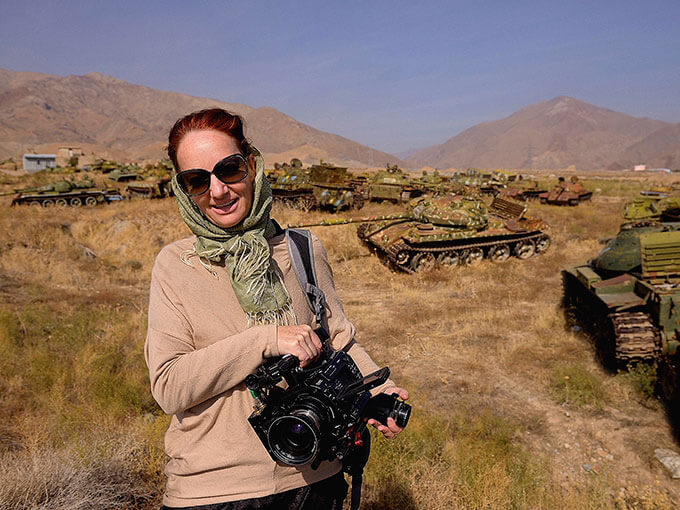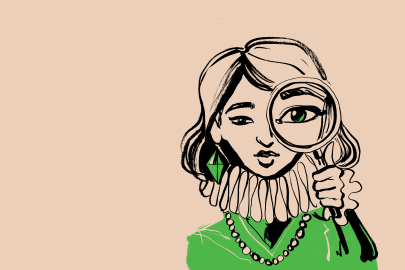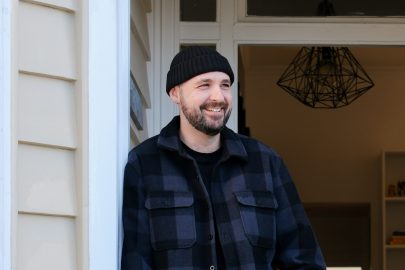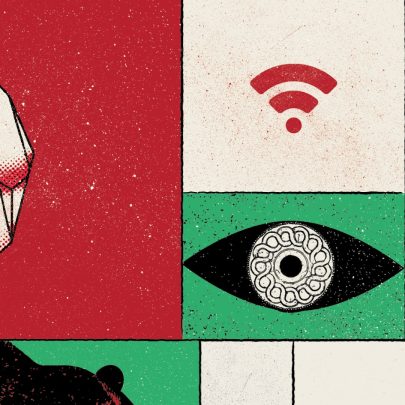Nov 30, 2017 People
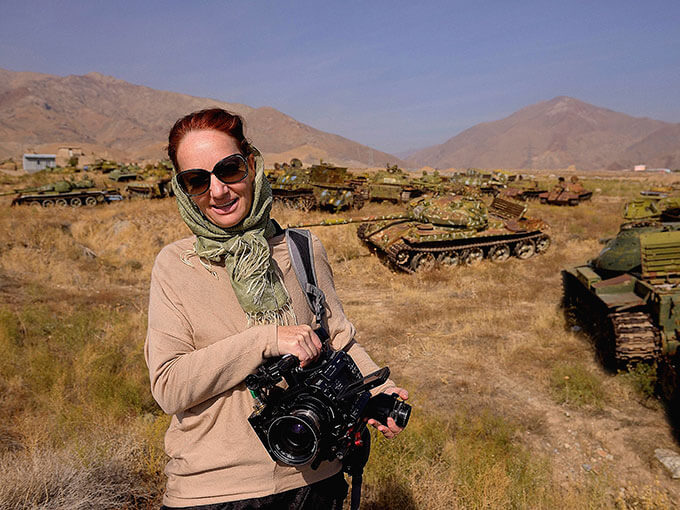
World vision
Film-maker Pietra Brettkelly travels the globe, surmounting financial and other obstacles to make her documentaries. She tells Metro about refusing to compromise, her new film – and why she wants to hang out with the Pope.
Typically, her documentaries take years to make. For the last one, A Flickering Truth, she travelled to Afghanistan seven times during the two years and seven months of filming.
On these trips, she made it clear to drivers not to go near Taliban country. Once, she and her crew drove through a Taliban town, unaware until they got there. They headed up through the mountains and their van broke down and the driver turned around and said, “Put your burka on and stay in the car.” She thought to herself, “Okay, we could all be kidnapped; some of us are foreigners and it would be a great ransom for the Taliban.” She’s happy to put herself at risk, but not the others. It was dark by the time they were back on the road and hours before they got to the next town. No lights anywhere. They encountered roadblocks and saw drones. She was scared, but she never worries she is going to die. Sometimes she thinks if it did happen, what an extraordinary life she’s had. It’s exactly the life she wanted.
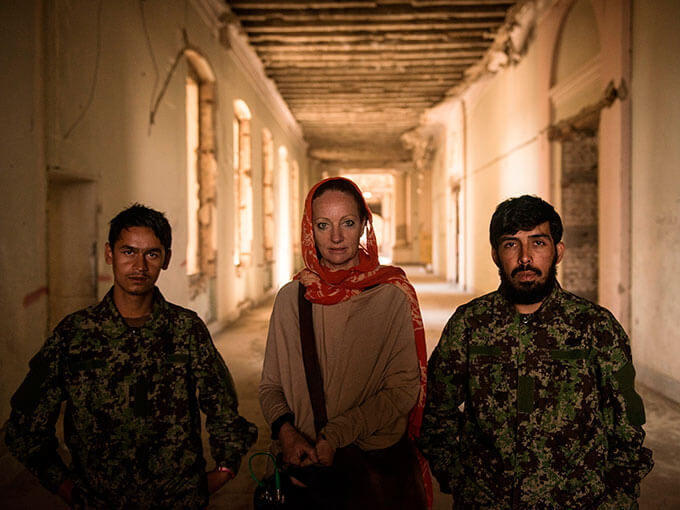
Most people who know Brettkelly agree on some things about her. When she finds a story, she doesn’t stop first to work out if she can do it. She’s not put off by the idea of entering a war zone, or that she doesn’t have funding, or that her gender may limit her in certain countries, put her in danger, even. Her friend and fellow film-maker Leanne Pooley says, “Where many of the obstacles she faces would give the rest of us pause, Pietra is without a pause button. She goes forward and finds a way.”
For her latest film, Yellow Is Forbidden, which she’s close to finishing, Brettkelly went on 14 trips — to Los Angeles, New York, Paris, Italy, Switzerland and China — to shadow her subject, Guo Pei, the Chinese fashion designer famous for making the yellow cape Rihanna wore to the 2015 Met Ball in New York. In close to two years, Brettkelly gathered 200 hours of footage that has since been translated into English and is now being edited down to a more audience-friendly 90 minutes before she enters it into the film-festival circuit.
Before Yellow, Brettkelly knew she wanted to make a film with a strong female character and about what it’s like to be inside the mind of an artist. She chose Guo Pei after looking through her ideas folder and finding a picture of a crazy pair of shoes that sang out. She researched, found a phone number, and on the third call to China was able to speak to someone in English. The woman kept saying, “Guo Pei is very private, she will say no, she will say no.” Brettkelly sent an email. Within an hour, she had a reply, and three days later, she and Jake Bryant, the cinematographer she has worked with for 14 years, flew to China.
It has to be an obsession, she says, for it to work. And in the end, her subjects work as hard as she works. They have to believe the project is worth it, “because nobody gets paid”. All of them get warned before filming starts. She tells them, “When you laugh and when you cry, I will need to be there. There is no film without dramas. I will have to remind you why you wanted to do this,” and they all say, “It’ll be great!” and she says, “No, you will start to hate us.” And all of them do at some point, except Guo Pei. “She has been so incredible,” says Brettkelly. “And that’s part of my problem, I mean, you have to fall in love with the subject, really. And I do, I love them all.”
She always wanted to be a documentary film-maker. She remembers being seven or eight, living in Whakatane, the youngest of four kids. One night, the power went out and they lit candles and gathered in her parents’ room to tell stories. She remembers her dad telling one about when he lived in Bahrain as a child, when his father worked for an oil company: A local man and his donkey would cross the surface of a sludge lake in the early morning, while it was firm. One day, he was late and the sun had softened the sludge. His donkey became stuck but he refused to leave the animal behind. They were trapped, caught in the hot Arabian sun. Finally, he shouted “Insha’Allah” — if God wills. She remembers the story vividly, seeing the colours in her mind: “The sludgy colour of the fields with the brightening blue of the skies as the huge sun rose.” This is the first moment she can point to that hints to her future as a visual storyteller.
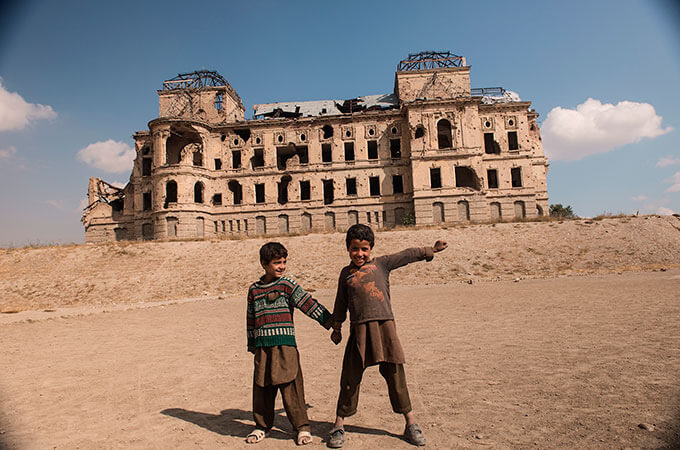
Pietra Brettkelly’s parents, Madeleine and Arthur, met in Wellington at the Bank of New Zealand. They married and had two children before deciding to move to Ohope in the eastern Bay of Plenty because they wanted to live a different life. They had two more children there, all four arriving within five years: Tony, now 56, Jody, 55, Sharon, 53, and Pietra, 51. There wasn’t a lot of money as they were growing up, but they played sport and danced and swam and rode bikes together and visited the library in their pyjamas every Monday night to get a new haul of books. Madeleine, a talented seamstress, made clothes for local people, and Arthur had jobs as a milkman, a secretary for a timber company, running a fruit shop. When Pietra was 13, her parents decided they would spend six months in Europe and took the youngest two out of school (Jody, who was in the US on an AFS scholarship, met them there; Tony stayed behind to start university). Sharon remembers arriving in London, age 15. “Mum and Dad basically said, ‘We haven’t got any money’, so everyone had to go out to work. Pietra was this tall, spindly redhead with freckles on her face and Jody found her a job in a lolly shop. Jody worked in a bakery and I worked in a pub, under age. Mum worked in a bottle shop and Dad at a bank. It was amazing. We were pretty blimmin’ naive; all we’d known was living in Ohope all our lives, and then we went to London.”
Film-maker Justin Pemberton says his friend is a sum of all the bizarre places she has been, that she is never happy unless she has a reservation in an overseas hotel, that “she is addicted to check-ins”. This seems to be in the Brettkelly blood. Madeleine, now 78, and Arthur, 81, have travelled extensively throughout their lives. Through Iran, India, Nepal, living for a time in Papua New Guinea. When Pietra went away to university, her father wrote her a card with a poem (he often writes to his kids and has written memoirs, poetry and prose) and added a note at the bottom saying he and Madeleine were heading away on an adventure the following week — and off they went for months.
After a year at law school in Wellington, almost a year at journalism school — not finishing either course — and a year working as a “terrible” journalist for the Rodney Times, Pietra also took off to travel and didn’t return for six years. “It was an amazing education, really, and I thought, this is how I want to actually live, all the time. It was pretty clear to me then that the harder the travel, the more I loved it.”
For a long time she has known that she does not want a conventional life with a husband and kids. “Those kind of structures, I suppose, of what the norm is, the regular path, that has never really attracted me.” She says it would be nice to meet a man who could put up with her lifestyle, the last-minute trips to sometimes dangerous places, the complete lack of financial stability. “But I haven’t so far,” she says; “we’ll see.”
She chooses to live in New Zealand, even though the distance makes it hard and she knows she has lost opportunities because she doesn’t bump into people as she would if she were in New York, or LA, or London. She thinks she would have crumbled if she had lived in any of those places and tried to have the career she has. And being here has given her something else. Here, she has support and a place to escape to and nature and solace.
Her friends worry about her when she travels to war zones. “I can’t imagine what her parents must go through,” says good friend and fellow film-maker Joanna Paul. But the truth is, her parents don’t worry about her at all. “You can get killed coming down the Ohope hill, for goodness’ sake. I would worry more about her driving from Auckland to here,” says Madeleine. “You hear all the bad stuff that happens in places on the news, but they are beautiful countries [she travels to] and they are fascinating, and unless you happen to be in the wrong place at the wrong time, nothing is going to happen to you. I know people think we should worry, but what good does it do? And why would you hold her back? She would resent us for it and she wouldn’t tell us a thing.”
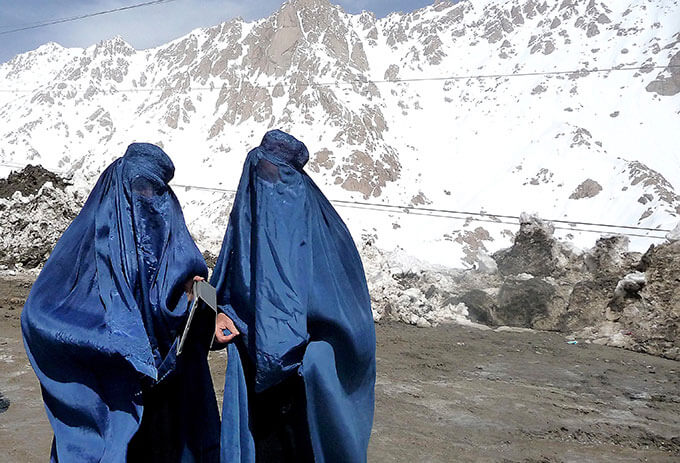
Before she became a documentary film-maker, Pietra Brettkelly worked in television. In 2005, for the show Ends of the Earth, she travelled to Sudan with Paul Henry and one day, she found a diva sitting under a tree. “I’m sure the reason Pietra did those [TV shows] was to find some good stories to make a documentary,” says Justin Pemberton. “She’s always looking for something remarkable.”
Vanessa Beecroft, an Italian contemporary artist who became the most controversial star of Brettkelly’s films to date, was in Sudan with her photographer, assistant and translator, doing performance work. Under the tree that day, she told Brettkelly that she was planning to adopt twins from the orphanage next door and that she had been breastfeeding them for weeks. Brettkelly was all in.
The Art Star and the Sudanese Twins follows Beecroft as she attempts to adopt babies Madit and Mongor Akot, and at the same time use them as models for a major art exhibition. A write-up on entertainment site Vulture describes the film as “brutally effective because it lets Beecroft hang herself with damaging quotes and appalling behavior”. Perhaps more than anything, it highlights Brettkelly’s ability to extract and capture the good and evil in her subjects. “When I enter into these films,” she says, “I am attracted to really interesting people, and really interesting people are complex. They are going to have ups and downs and unpredictability because they are fascinating and they are the kind of people who will hold 90 minutes.” She says, “Every day with Vanessa, it was like, god, what’s going to happen today?”
She travels back to the location of each film once it’s made to show her subjects an almost completed version, in case she has inadvertently captured something that’s culturally insensitive. After showing Art Star, Brettkelly received a 14-page document from Beecroft’s lawyer, listing everything that she wanted changed, right down to taking out all the shots with one side of her face that she didn’t feel were flattering. Brettkelly consulted her own lawyer and responded to Beecroft with a letter politely stating she had no intention of changing a thing. She and the artist are still on good terms.
When friends describe Brettkelly, they talk about her entrance into a room. It’s a cliché, but how many people can you really say that about? “It’s the pale, pale skin and the tall, tall figure,” says Joanna Paul. “The room seems to shrink around her.” It’s said that, at 5 ft 10 and a half [1.79m], and with her long, emphatic hair, when she arrives, everyone wants to know who she is, and she is dying to know who everyone else is; that she will ask 200 questions before she starts talking about herself. “She is striking and her personality is striking,” says sister Sharon. “When she walks into a room, people look at her; she’s got great presence, and she backs it up with her personality.”
Madeleine Brettkelly makes most of her daughter’s clothes and Pietra says she mostly rotates three black dresses when she’s working. She wears big rings and plays with them and they flash around the room as she talks with her hands. She has a splendid crushed-velvet dress made in a floral print — the fabric bought from Jayne’s Wool and Fabrics in Whakatane, made especially for the Palm Springs International Film Festival because Madeleine said, “You have to wear a kaftan!” But it’s all that floaty hair that underlines Brettkelly’s presence. She has never cut it short. He sister Jody once told her, “Don’t ever cut your hair, or you’ll be nothing”, and in that way she sees her hair as having defined her personality and her approach to life. “I think, you know, you get a lot of shit for being a redhead, so it has made me pretty defensive.”
Once, she told the Russian director Viktor Kossakovsky she was thinking of changing her name to something easier and he told her not to think of it: “You’ve got to create a cult around yourself and be that crazy New Zealand redhead with that really weird name; that’s what you want to be known as, so keep at it, keep strange, keep your hair red.” He made her think she had to celebrate her difference and she has kept the long red hair, only once thinking of cutting it off when she needed to make some money.
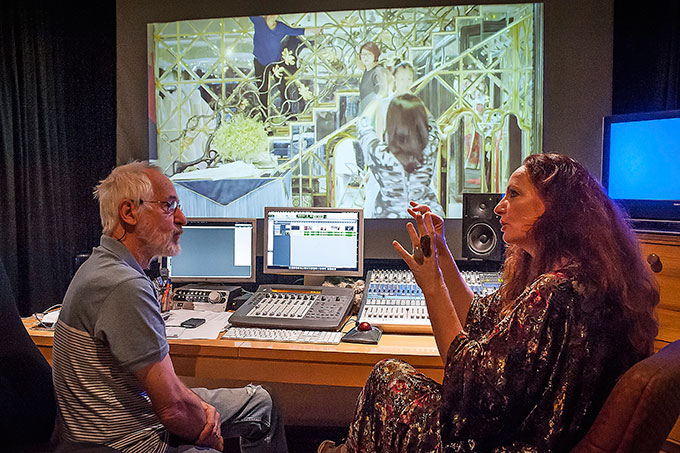
All those who know Brettkelly talk about how she’s broke. Her films generally cost around $750,000 and she has never been able to raise the full amount. She never gets paid. After her time in Afghanistan, she held jewellery parties to try to raise money, “until this woman at one of them, a friend of a friend, said, ‘You are obviously not very good at that film-making if you have to have parties like this, but I’ve got to say you are really good at selling jewellery, so maybe you should explore that’”. Brettkelly thought to herself, enough. She looked at being a guinea pig for a drug-testing outfit trialling antidepressants and anti-inflammatories, until she found out she had a (harmless) blood condition that ruled her out; she has done crowd-funding, held events and parties, and has at times received funding from the likes of the Sundance Institute, Gucci Tribeca, the Puma Creative Catalyst Award, the New Zealand Film Commission and private philanthropists.
She owns an apartment in Auckland, mortgaged over and over, which she says she wouldn’t be able to afford now. And like a lot of her film-maker friends around the world, her wallet often carries only change. She tells a story about a trip to the Luxembourg City Film Festival, the wild redhead. “They put me up in this extraordinary hotel, all meals, all everything, laid on. I had such a good time, and on the last night, they invited me to their film awards. I had such a great night, dancing till four in the morning, and of course I’d done quite a bit of drinking. I had 1.65 euros to my name. That’s all I had. I was waiting for some payments, I was maxed out on credit cards, everything. I got home that night and in my slightly drunk state, I got a chocolate bar out of the mini bar. I was leaving the next morning and when I woke up, saw the wrapper and went, oh no. So I grabbed the wrapper, put the Do Not Disturb sign on my hotel door, and I rushed out and asked somebody on the street, ‘Where is the nearest convenience store?’ and ran with the wrapper and bought another for 99 cents, and I was like, oh my god. Imagine running out of Luxembourg without paying for your chocolate bar. That sort of thing happens all the time.”
The New Zealand Film Commission’s funding criteria are generally geared towards supporting New Zealand content; it has helped only some of her projects. Brettkelly’s argument is that we should be part of the international community and we should have commentary on international stories. Commission chief executive Dave Gibson says the funder does support a small number of internationally themed or internationally set films and has supported Brettkelly “because of her voice and the fact she is a New Zealand director”. So far, it has committed $300,000 to Yellow Is Forbidden, but there is a commitment to provide another $125,000 if Brettkelly can match it from overseas sources. She has launched a Boosted crowd-funding campaign.
When A Flickering Truth was chosen as New Zealand’s entry in the foreign language category of the Oscars last year, Gibson described Brettkelly as “an uncompromising and courageous film-maker with a singular cinematic voice and vision”. Strange, then, that she is on the breadline? Yes and no. Joanna Paul says she gets that the Film Commission has a limited budget, “but when you’ve got an extraordinary talent that can pitch internationally and win at Sundance and win in Berlin and win in all these other countries and who wants to take a film to Cannes, that’s the sort of person you want to get behind”. Brettkelly diplomatically says she is extremely grateful to the commission for any funding she gets, that she has ongoing discussions with it about her films, and that she chooses to live the life she does, making the films she makes.
Gibson often tells a story about going to a barbecue with a cross section of society and the dream being that every person there has seen a New Zealand film they enjoyed. “In that matrix,” he says, “Pietra is quite a small part; not a lot of people at the barbecue are going to have seen her films, but those films are still critical and important.” He goes on to say that “to some degree, Pietra chooses to make her films in a fairly individual way and that means that she’s less interested in the provisions that come with traditional finance”.
The fact is that the films belong to her. Ticket sales don’t factor into her decision making; when she meets a diva under a tree, or she sees a crazy pair of shoes, she wants to tell the stories behind them all. She says she would make more-popular films if she was attracted to the subject matter. “It’s not a conscious decision where I think, I’m going to make a film that only 27 people are going to be interested in watching.” But because she goes to the ends of the Earth and has no money and puts every single thing she has on the line for every single one of her films, Brettkelly will not compromise. “Otherwise, what is the bloody point of it, you know? Why am I taking these risks and making these sacrifices and making those I love back here turn prematurely grey. What’s that all about if I don’t stay true to it? I would be an incredibly unfulfilled person.”
She thinks there is a possibility that Yellow might be quite commercial. Rihanna is in it, so who knows, maybe it will make some money. She laughs. “Pigs just flew by as well.”
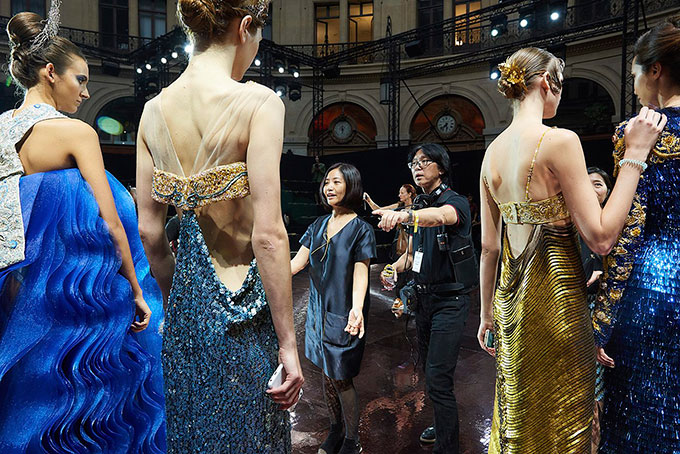
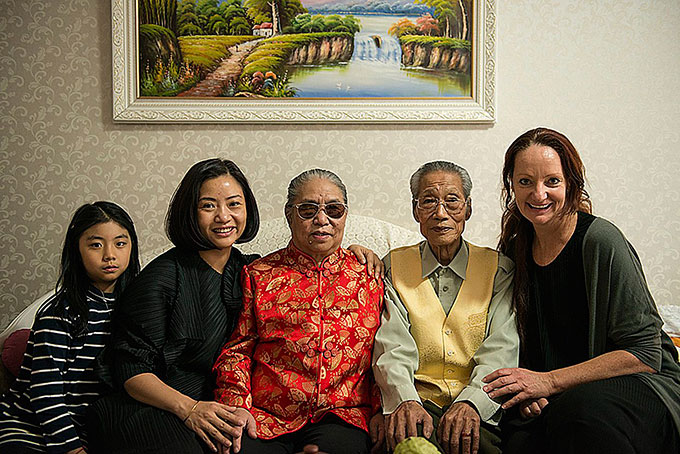
She really admires the Pope. For her next film, she would love to do three days with him. Just her and Jake Bryant living with him for three days. Three, because it is a religious number. The other religious number she knows is 40, but she knows there is not a hope in hell she will be allowed access to the Pope for 40 days and 40 nights. She has been trying to contact his people for a while, but has had no reply, yet. She needs only three days.
When she has her eyes fixed on a film, she never thinks she won’t be able to do it. “If somebody’s going to do it,” she says, “why not me?”
Her job is not one where she can ever switch off, because she is always fascinated by the world. She can’t imagine that there will ever be a time when she will switch off. She will keep finding stories that fascinate her for the rest of her life, and off she will go.
She was in Sweden for a screening of A Flickering Truth. She went out in the cold afterwards and there was a small group of people with her and a guy and his young daughter started walking towards them. “It was the wrong film!” the man said. She thought to herself, oh god, he is going to ask for his bloody 15 cents back. He said, “We went to the wrong film. It wasn’t the film I thought we’d booked for.” She said to him, “Well, I’m really sorry. You could go to the ticket office and maybe they will refund you.” He said, “No way, it was so amazing, it was like a poem”, and then he turned and walked off. She thought, god, that is enough, you get moments like that and it is enough.
This is published in the September- October 2017 issue of Metro.

